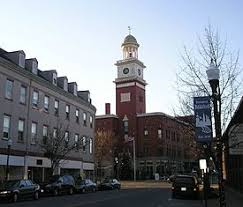
MaineBiz recently ran two articles on a real estate broker who tracks the “hottest” towns in Maine. And no, he is not talking about recent weather patterns. He’s calculating which communities have the highest percentage increase in real estate sales each year. This is in number of houses, not cost of the homes.
Why would you care about this unless you’re buying or selling a house, or thinking of getting your Realtor license?
Because it illustrates what direction Maine’s growth is heading.
The 2018 hottest to not-so-hot in order are: Standish, Auburn, Biddeford, Brunswick, Waterville, Gorham, Yarmouth, Sanford, Saco, and Falmouth.
Observations:
The Good: Six of the ten are service centers, i.e., a larger city or town in a rural area where people typically travel for goods and services. Higher growth in these towns is the opposite of sprawl.
The Bad: Standish is in the outer ring of Greater Portland; high growth there does smack of sprawl…and long commutes for residents.
The Let’s Face It: Gorham, Yarmouth and Falmouth are already high-growth, desirable communities. Clearly they will continue to grow; and frankly this pattern has solidified over the past 20 years. This means more cars, more miles, more hours, and more wear and tear on the roads. And unfortunately, we live in a state where attitudes about public transportation typically sound like, “I have a car. Why do I need public transportation? And by the way, can you do something about the awful traffic congestion in my town?”
The answer to that last question is increasingly no. If funding can be scraped together, municipal and state officials can sometimes buy time by making the road networks more efficient. But as long as Southern Maine continues to add housing strung along state roads and in far-flung developments where the only option is at least two cars per household, this is only a stopgap. And we all know what the traffic looks like south of here.
Don’t get me wrong. We need more people moving into our state, especially younger people who can fill our jobs. And without doubt, the next recession will slow growth down, for a while anyway.
But we need to think ahead about how we want Southern Maine to look in twenty or thirty years…or more. We need to encourage our municipal and state leaders to think long term, to plan beyond their term in office. We need to work regionally to make some level of public transportation feasible, and to help make that happen, we need to structure local zoning to keep our communities recognizable as historic village centers that can also better support transit.
The realities of climate change are forcing many people to think further out than the usual 10-20 year planning window. Perhaps we should extend that long-term vision to all our infrastructure?
